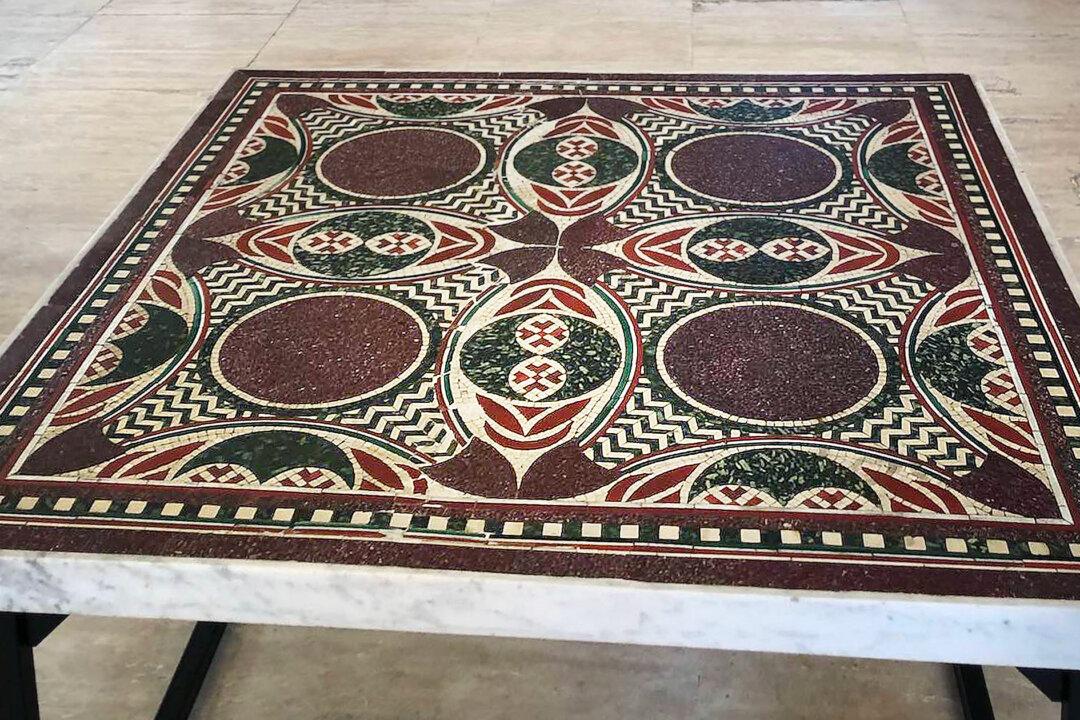A Roman mosaic dating back to Emperor Caligula had somehow, reportedly, found its way into an art dealer’s Park Avenue apartment, where for the last 45 years it held up cups of coffee for her and her guests.
For decades, Helen Fioratti—so the story goes—owned the opulent, colored-stone piece after it went missing from a Nemi museum in Italy. Roman architect Dario Del Bufalo, 63, who specializes in the study of ancient stone queries, had only a photo from the 1950s depicting the mosaic to publish in his book on porphyry. But he explained how an unlikely encounter at a Bulgari store on Fifth Avenue led to the mosaic’s rediscovery.






